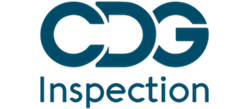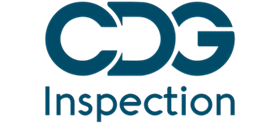Regulatory compliance is a cornerstone of the pharmaceutical and healthcare industries, ensuring that products are safe, effective, and of high quality. Among the various aspects of compliance, adherence to Good Manufacturing Practices (GMP) stands out as crucial. GMP provides a set of guidelines and regulations to ensure the consistent production of safe and effective pharmaceuticals, medical devices, and other healthcare products. The World Health Organization (WHO) plays a pivotal role in promoting global health standards, and its GMP audits play a significant role in ensuring regulatory compliance in the pharmaceutical sector. This article delves into the connection between WHO GMP audits and regulatory compliance, highlighting their importance, process, benefits, and challenges.
Understanding GMP and Regulatory Compliance:
GMP, as defined by the WHO, refers to the “part of quality assurance that ensures that products are consistently produced and controlled to the quality standards appropriate to their intended use and as required by the marketing authorization.” In essence, GMP guidelines provide a systematic framework for the manufacturing and distribution of healthcare products. These guidelines encompass various aspects, including facility design, personnel training, documentation, quality control, quality assurance, and more.
Regulatory compliance, on the other hand, involves adhering to the laws, regulations, and standards set by regulatory authorities in a specific region or country. Compliance ensures that products meet the safety, efficacy, and quality standards established by these authorities.
Role of WHO GMP Audits:
The WHO, as a global health authority, plays a critical role in setting and promoting international health standards. WHO GMP audits are an essential component of its efforts to ensure the quality of pharmaceutical products worldwide. These audits involve the assessment of manufacturing facilities and processes to ensure they adhere to GMP guidelines.
Connection between WHO GMP Audits and Regulatory Compliance:
The connection between WHO GMP audits and regulatory compliance is multi-faceted and interconnected. Here are some key points illustrating their connection:
a. Alignment with International Standards:
- WHO GMP guidelines are recognized globally and serve as a foundation for many national regulatory agencies’ standards.
- Manufacturers that adhere to WHO GMP guidelines increase their chances of meeting the requirements of multiple regulatory bodies, thereby facilitating international trade and distribution.
b. Enhancing Product Quality and Safety:
- Adhering to GMP guidelines, as assessed through WHO GMP audits, ensures that products are manufactured under controlled conditions, minimizing the risk of contamination, errors, and substandard production.
- Regulatory compliance, as guided by GMP principles, ensures that the end products are safe, effective, and of consistent quality.
c. International Trade Facilitation:
- Many countries require imported pharmaceutical products to meet their domestic GMP standards.
- WHO GMP audits provide an objective assessment of a manufacturer’s compliance with international standards, thus supporting cross-border trade by verifying that products meet regulatory requirements.
d. Strengthening Regulatory Frameworks:
- National regulatory authorities often collaborate with the WHO to align their GMP inspection processes with international standards.
- WHO GMP audits contribute to the strengthening of regulatory frameworks by sharing best practices and facilitating capacity building.
e. Mutual Recognition Agreements (MRAs):
- MRAs between countries acknowledge each other’s GMP inspection processes.
- WHO GMP audits can provide valuable input to support the establishment of MRAs, promoting harmonization of regulatory practices.
Process of WHO GMP Audits:
The process of WHO GMP audits involves several key stages:
a. Pre-Audit Preparations:
- The manufacturing facility prepares documentation, such as Standard Operating Procedures (SOPs), batch records, and quality control records, for review.
- An audit team is established, comprising experienced professionals in pharmaceutical manufacturing, quality control, and regulatory affairs.
b. On-Site Inspection:
- The audit team conducts an on-site inspection, evaluating various aspects of the facility, including infrastructure, equipment, personnel, documentation, quality control procedures, and more.
- The audit team may also interact with employees to understand their roles and responsibilities in maintaining GMP compliance.
c. Documentation Review:
- The audit team reviews the facility’s documentation to assess its alignment with GMP guidelines.
- This includes evaluating procedures for handling deviations, change control, and corrective and preventive actions (CAPA).
d. Reporting and Recommendations:
- After the audit, the team prepares a detailed report highlighting areas of compliance and non-compliance.
- Recommendations for corrective actions are often included in the report.
e. Follow-Up and Verification:
- In some cases, follow-up audits may be conducted to ensure that corrective actions have been implemented effectively.
Benefits of WHO GMP Audits:
a. Quality Assurance:
- WHO GMP audits promote the production of high-quality products by ensuring adherence to established guidelines.
b. Patient Safety:
- GMP compliance, verified through audits, reduces the risk of substandard or counterfeit products entering the market, safeguarding patient health.
c. International Acceptance:
- Manufacturers that successfully undergo WHO GMP audits gain recognition and acceptance in multiple countries, simplifying international market access.
d. Regulatory Confidence:
- Regulatory authorities have greater confidence in products from facilities that have undergone successful GMP audits, expediting approval processes.
e. Industry Reputation:
- Manufacturers that consistently comply with GMP guidelines build a reputation for producing reliable and effective products.
Challenges and Considerations:
a. Variability in Interpretation:
- Different auditors may interpret GMP guidelines differently, leading to variations in audit outcomes.
b. Resource Constraints:
- Many manufacturing facilities, particularly in low- and middle-income countries, may lack the resources needed to fully meet GMP requirements.
c. Cultural and Language Differences:
- Auditors need to consider cultural and language differences that can impact communication during audits.
d. Evolving Regulations:
- GMP guidelines and regulatory requirements evolve over time, necessitating continuous updates and adjustments by both manufacturers and auditors.
e. Confidentiality Concerns:
- Manufacturers may have concerns about sharing proprietary information during audits.
Conclusion:
In conclusion, the connection between WHO GMP audits and regulatory compliance is pivotal for ensuring the quality, safety, and efficacy of pharmaceutical products on a global scale. These audits serve as a bridge between internationally recognized GMP standards and regulatory expectations. By upholding GMP principles, manufacturers not only demonstrate their commitment to producing high-quality products but also facilitate international trade and cooperation. While challenges exist, the benefits of WHO GMP audits far outweigh the complexities, ultimately contributing to the betterment of public health worldwide.





